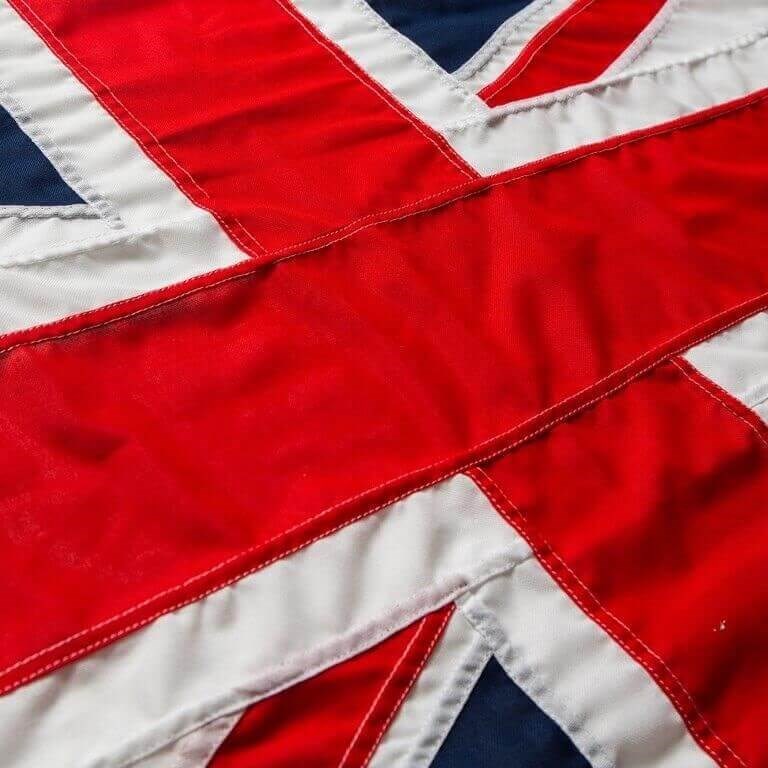Our digitally printed Angola flags are made to a high quality, durable knitted polyester. Made to the Flag Institute approved design, by us here in the UK. Each flag is hand finished with a double sewn hem for durability, and a headband, rope and toggle suitable for attachment to any standard flagpole.
Trivia
Technical Specifications
| Adopted |
|
|
|---|---|---|
| Proportion | 2:3 | |
| Design |
|

Brief History
The first known flag in the area of south west Africa that was to be Angola was the flag of the Kingdom of Kongo in 1390. It featured a simple plain white field with a red cross in the centre.
When the Portuguese invaded in 1575 and colonised Angola the flag was changed to the Portuguese flag. The flag is a vertical green and red bicolour with the Portuguese lesser coat of arms where the colours join.

The Flag of the Kingdom of Kongo (1390 -1914)

The Flag of Portugal (1575 -1975)
The People’s Movement of the liberation of Angola (MPLA) began guerrilla warfare against the Portuguese government in 1961. The MPLA chose a red and black horizontal bicolour flag with a five-pointed star in the centre that referenced the movements’ communist connections.
The National Liberation Front of Angola (FNLA) joined the MPLA to fight against the government, the groups flag being a white and yellow flag separated with a red stripe going from top right hand side to bottom left with a white five pointed star in the centre.
In 1966 the National Union for the Total Independence of Angola (UNITA) was formed and joined with the MPLA and the FNLA against the government, their flag was a red-green-red vertical tricolour with a red rising sun and cockerel in the centre.
A new Portuguese Angola flag proposed in 1967, it was the same as the original with the lesser coat of arms of Portuguese Angola in the lower right hand side.
In 1974 the Carnation Revolution saw the Portuguese withdraw from Angora and a ne horizontal red and black bicolour with a yellow half-gear, machete and five-pointed star flag was chosen in 1975.
The new flag took its colours and general design from the MPLA flag, the red to symbolise socialism and the black to symbolise Africa with the central symbol said to reflect communism. However, in recent times the meaning has been changed to red reflecting the struggle of independence and black for the continent of Africa. The Central machete now represents the peasantry and the cog represents industry, the gold star has no meaning.
When Portuguese government handing over power to the MPLA, FNLA and UNITA it caused a civil war over control that lasted till 2002. To celebrate the end of the civil war a more optimistic horizontal flag with blue, white and red stripes with a central yellow sun design that was taken from a cave painting in the Tchitundo-Hulu cave was proposed but not adopted.
The Military Flags of Japan
Each Governorate in Egypt has a their own flag. Here are some examples.
The Emblem of Angola
The current version of the Emblem of Angola was Adopted in 1990 and is very similar to the version used from the countries independence 1975.
It features a five-pointed cold star above a crossed machete and hoe with a rising red sun below. The symbols are surrounded by half a cogwheel and cotton and coffee leaves. At the bottom is an open book with a banner reading “the republic of Angola”.

Historical Emblems and Coat of Arms of Angola
The first known Coat of Arms used in Angola was that of The Kingdom of Kongo, it featured a red, blue and white shield inside of which is a white cross and five armoured arms with swords. Above the shield is a helmet and five arms holding swords.
From 1935 the Coat of Arms of Portuguese Angola was used. It features a shield split into three. The top left hand side features five smaller blue shields each with five white circles, the top right hand side is purple featuring a gold elephant and a gold zebra and the lower third section features five green wavy lines. Behind it is a crowned armillary sphere used in most Portuguese colonial emblems and below is a banner reading “Colónia Portuguesa De Angola.” The lesser Coat of Arms is just the shield.
In 1951 the wording banner on the coat of arms was changed slightly to “Provín. Portuguesa De Angola.”
When The People’s Movement of the Liberation of Angola formed in 1961 they chose an emblem that features a black hand holding a silver torch in front of a outline of Angola. Underneath that features “MPLA” and “PAZ, TRABALHO E LIBERADADE” surrounding it.
The Emblem of the People’s Republic of Angola was designed in 1975; it is similar to the modern emblem but has a golden cogwheel instead of grey.
National Air Force of Angola Roundel
The National Air Force of Angola Roundel was adopted in 1975 when Angola became an independent country. It takes the red-black-yellow colours from the Flag of Angola and features a five-pointed star in the centre.

Useful Links
Download Our Brochure
Download our electronic brochure to check out the full range of products we can supply you with.
Download NowContact Us
See a flag you like? We can manufacture any flag design in any size, speak to one of our experts to find out more.
Contact Us




